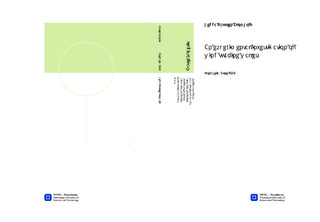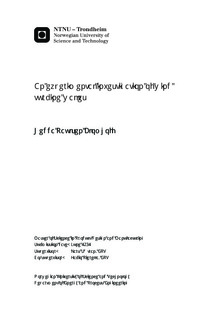| dc.description.abstract | In the present study the wake behind a scaled; Horizontal Axis Wind Turbine (HAWT) has been investigated. The experiments were performed at the Department of Energy and Process Engineering, at the Norwegian University of Science and Technology, NTNU. The turbine was installed in the wind tunnel at the department and measurements were performed at several distances behind the turbine to examine the development of the flow. A five-hole pitot probe was applied as measurement instrument. The instrument made it possible to calculate both size and direction of the velocity components.Through the experiments, characteristic curves of the turbine and grid measurements over the cross-section of the wind tunnel, were obtained. The power and thrust coefficients were measured against the local velocity ratio at the tip of the blade, the 'Tip Speed Ratio' (TSR). The power coefficient had a peak at TSR=5,5. The maximum value at this point was 0,45. The highest measured thrust coefficient was 1,15, achieved at TSR=10,3. During the experiments the turbine operated at optimal conditions, at the highest obtained power coefficient.Measurements behind the turbine found that the axial velocity distribution developed as expected. A significant velocity deficit was measured in the wake behind the turbine, which gradually decreased with increased distance to the turbine. Due to the presence of the hub and tower, the middle of the wake was characterized by disturbances. Moving down the wake the profile got more symmetric. The tangential profile was almost symmetric about the origin, right behind the turbine, but drifted to the left at increased distance downstream. Contribution from the tangential components were gradually reduced further down the wake.The tower shadow moved with the rotation of the wake, in clockwise direction, as a region of lower velocities than the prevailing wake. Further downstream the tower shadow merged with the surrounding wake.The rotational axis relocated in the wake behind the turbine. Downstream, measurements showed that the center of rotation moved to the left of the origin. To investigate if the tower was responsible for the experienced downshift, an additional tower was mounted to the tunnel roof, above the turbine. The additional tower created symmetry about the hub and gave a symmetric development of the flow field. Thus, it was concluded that the tower was responsible for the relocation of the rotational axis. | nb_NO |

